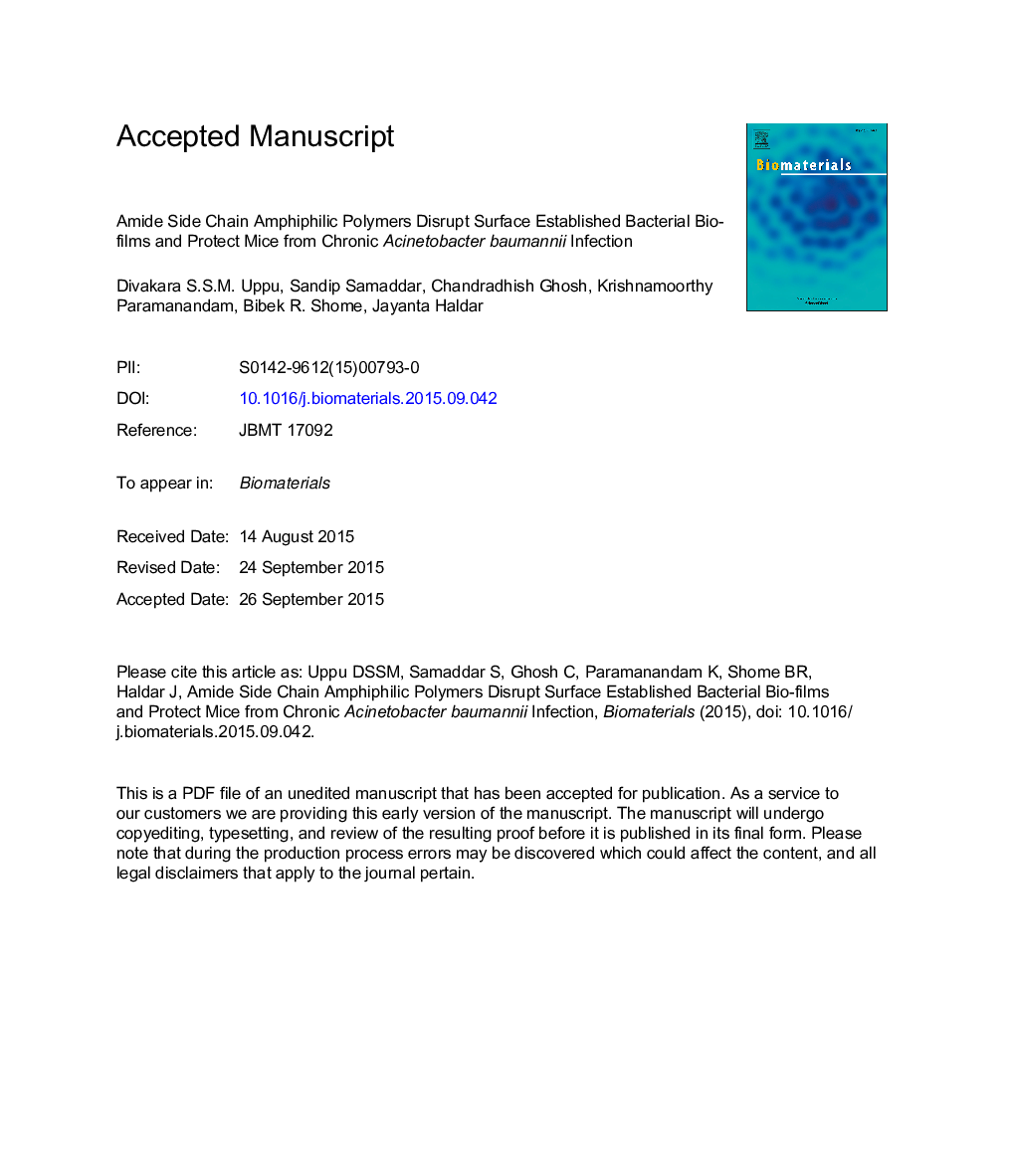| کد مقاله | کد نشریه | سال انتشار | مقاله انگلیسی | نسخه تمام متن |
|---|---|---|---|---|
| 6485377 | 393 | 2016 | 48 صفحه PDF | دانلود رایگان |
عنوان انگلیسی مقاله ISI
Amide side chain amphiphilic polymers disrupt surface established bacterial bio-films and protect mice from chronic Acinetobacter baumannii infection
دانلود مقاله + سفارش ترجمه
دانلود مقاله ISI انگلیسی
رایگان برای ایرانیان
کلمات کلیدی
موضوعات مرتبط
مهندسی و علوم پایه
مهندسی شیمی
بیو مهندسی (مهندسی زیستی)
پیش نمایش صفحه اول مقاله

چکیده انگلیسی
Bacterial biofilms represent the root-cause of chronic or persistent infections in humans. Gram-negative bacterial infections due to nosocomial and opportunistic pathogens such as Acinetobacter baumannii are more difficult to treat because of their inherent and rapidly acquiring resistance to antibiotics. Due to biofilm formation, A. baumannii has been noted for its apparent ability to survive on artificial surfaces for an extended period of time, therefore allowing it to persist in the hospital environment. Here we report, maleic anhydride based novel cationic polymers appended with amide side chains that disrupt surface established multi-drug resistant A. baumannii biofilms. More importantly, these polymers significantly (p < 0.0001) decrease the bacterial burden in mice with chronic A. baumannii burn wound infection. The polymers also show potent antibacterial efficacy against methicillin resistant Staphylococcus aureus (MRSA), vancomycin resistant Enterococci (VRE) and multi-drug resistant clinical isolates of A. baumannii with minimal toxicity to mammalian cells. We observe that optimal hydrophobicity dependent on the side chain chemical structure of these polymers dictate the selective toxicity to bacteria. Polymers interact with the bacterial cell membranes by causing membrane depolarization, permeabilization and energy depletion. Bacteria develop rapid resistance to erythromycin and colistin whereas no detectable development of resistance occurs against these polymers even after several passages. These results suggest the potential use of these polymeric biomaterials in disinfecting biomedical device surfaces after the infection has become established and also for the topical treatment of chronic bacterial infections.
ناشر
Database: Elsevier - ScienceDirect (ساینس دایرکت)
Journal: Biomaterials - Volume 74, January 2016, Pages 131-143
Journal: Biomaterials - Volume 74, January 2016, Pages 131-143
نویسندگان
Divakara S S M Uppu, Sandip Samaddar, Chandradhish Ghosh, Krishnamoorthy Paramanandham, Bibek R. Shome, Jayanta Haldar,